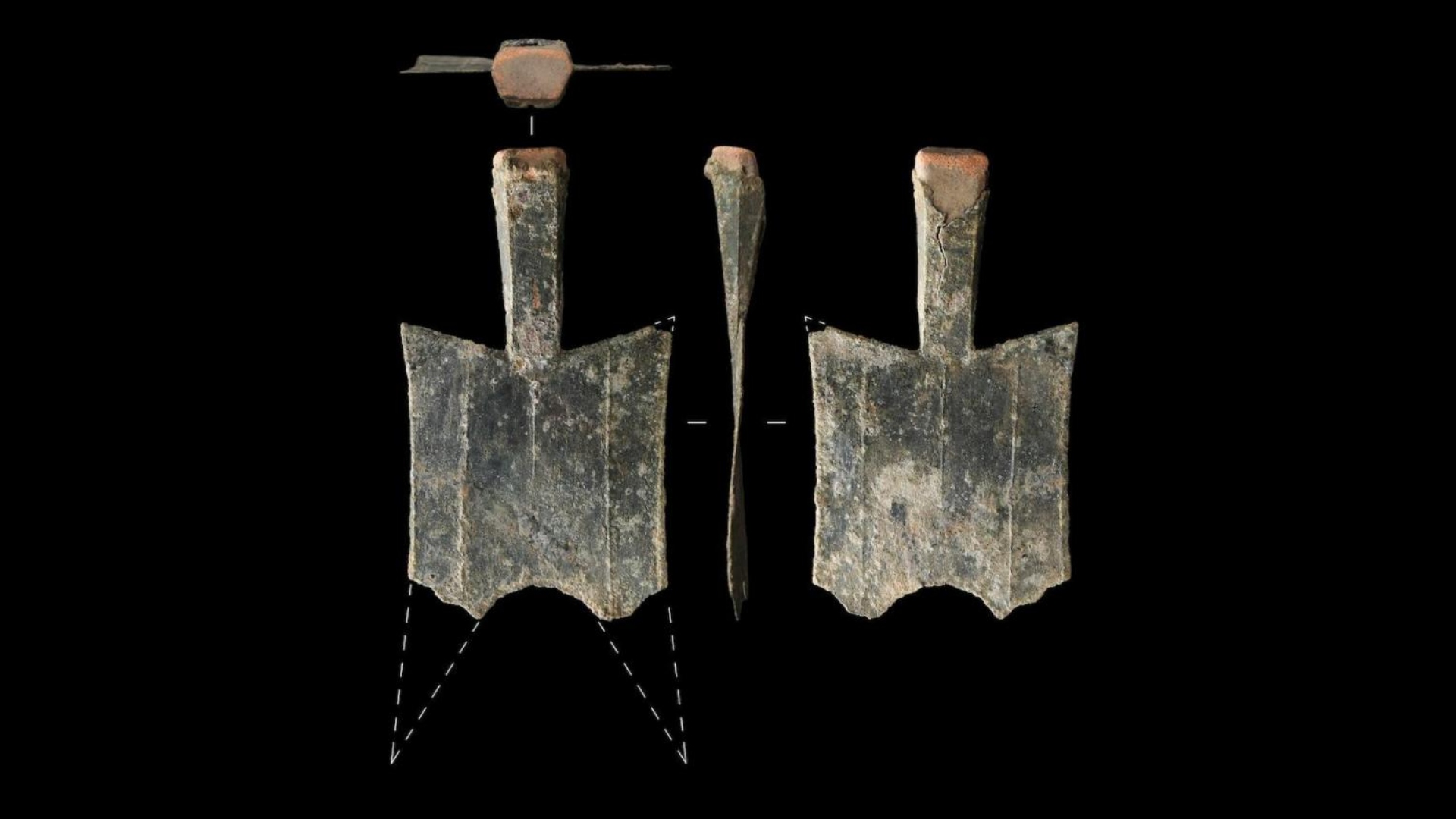It has long been thought that coin minting – the process of coin manufacturing which includes the stampings on them – first began in Turkey or Greece. However, this has been challenged by recent findings, which suggest that coin minting may have begun in China. The findings have been published in the journal Antiquity. The researchers involved in the study claimed that they have discovered miniature shovel-shaped coins made up of bronze which were mass-produced in China around 2,600 years ago.
Archaeologists were on a mission excavating the vestiges of Guanzhuang, which is an ancient city in the eastern Henan province of China. Guanzhuang was established around 800 BC and the factories of casting bronze, that was used for the production of various objects used in rituals, for example, vessels, weapons, and tools were opened around 770 BC, Hao Zhao, an archaeologist of Zhengzhou University and the lead author of the research said. However, it took another 150 years for people to start minting coins in the region.
The Guanzhuang site has been excavated by the archaeologists for a decade, where they have uncovered numerous pits that are thought to be used to dump foundry waste.
The authors wrote in their research paper, “The earliest coins are thought to have been minted in China, Lydia (in Western Asia Minor) and India. Of these, the hollow-handle spade coin (kongshoubu) minted in China is a likely candidate for the first metal coinage. The spade coin was an imitation of practical metal spades, but its thin blade and small size indicate that it had no utilitarian function. The earlier spade coins had a fragile, hollow socket, reminiscent of a metal shovel. This socket was transformed into a thin, flat piece in later spade coins, and over time, characters were applied to the coins to mark their denominations. Several versions of spade coins circulated across the Chinese Central Plains until their abolition by the First Emperor of Qin in 221 BC.”
The researchers of the Antiquity paper used radiocarbon dating to determine the age of the coins and also to see when the minting started. They found that minting began sometime during the period between 640 BC and 550 BC. Previous researches indicate that coins from the Lydian Empire can be dated back to as early as 630 BC. The Lydian Empire was situated in what is today’s Turkey.
Zhao opines that the earliest known mints on coins from the Lydian Empire can be dated back to 575 BC to 550 BC. According to him, the Guanzhuang mints are the oldest known mints as of now.
The excavation in the Guanzhuang site helped the researchers retrieve two spade coins, which are similar to the garden spade, but smaller in size. They also found several clay molds used to cast the coins. One of the coins excavated in the site was found in a near-perfect shape, it is 6 inches long and about 2.5 inches wide. The coin weighed just 27 grams.
The remarkable facet of the discovery is the near completeness of the coins, the excavators were able to find the whole mint and also the casts that were used for it. Professor Bill Maurer of the University of California, Irvine, an anthropologist, explained the importance of the discovery. “Coins are often found bundled together and completely lacking any of the original contexts of their production or their use. But in this case, you’ve got the whole mint, and you’ve got the casts that were used,” Professor Maurer was quoted as saying in a statement. Maurer was not involved in the study.
The discovery of both the coins and the casts led the researchers to date the mint by radiocarbon and it put weight to their claim that these are the oldest coin mints known to date.
Professor Maurer further explained the significance of the findings and the validity of the claims made in them. He argued that coins are usually discovered away from the place where they were made. But in the case of the Guanzhuang coin mints, the scientists have “got a foundry which is full of carbon residue associated with the production of the item itself, which can prove how old the coins and mint are,” Maurer commented.
Zhao and his team think that the minting activities were known to the local government, as the location of the mints was close to the location presumed to be that of the administration. However, they have not inferred any conclusions regarding whether the coins were used for trades or used in taxes. They said that it remains a topic of further research.





